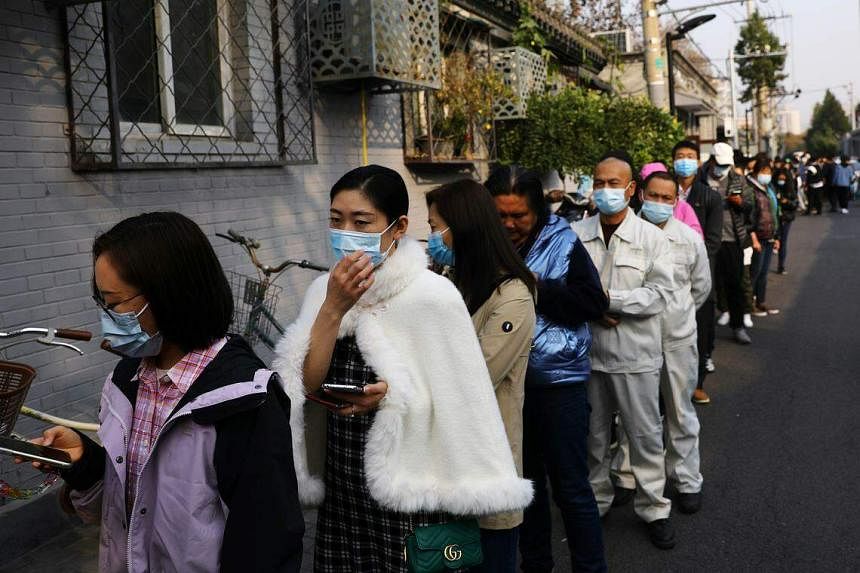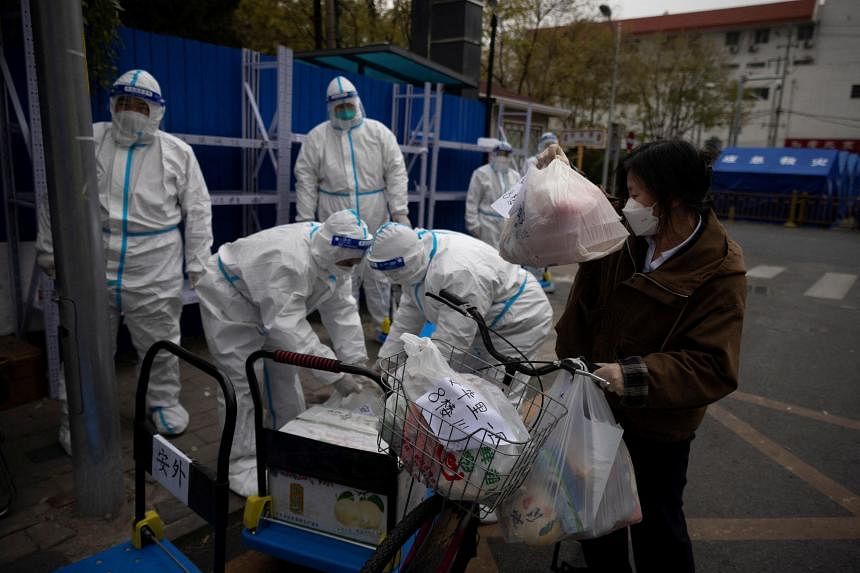BEIJING – Nine months after China abruptly reversed its strict zero-Covid policy, coughing and sneezing without covering one’s face in public places is no longer frowned upon. Neither is spitting in public.
Gone, too, are the “da bai” (Mandarin for “big white”) who were everywhere during the pandemic.
Fully clad in white protective coveralls, N95 respirators, face shields, gloves and even shoe covers, these anonymous figures could be anyone from healthcare workers and security guards to local municipal workers and cleaners.
Initially welcomed because they helped to ensure that residents received food and other essentials during lockdowns, they came to be disliked as enforcers of strict Covid-19 restrictions.
For nearly three years, China had one of the world’s strictest Covid-19 policies – a combination of regular mass testing, lengthy quarantines and strict lockdowns. It also all but shut its borders to keep new variants of the virus at bay.
While these curbs kept infection numbers and death rates remarkably low, the closed borders also meant the country was essentially shut off from the rest of the world, preventing foreigners and Chinese alike from entering the country.
This took a toll on the economy, which grew by only 3 per cent in 2022, missing official estimates of “around 5.5 per cent”. Some economists estimated that mandatory free Covid-19 tests cost 1.7 trillion yuan (S$323 billion) a year in major cities alone, or about 1.5 per cent of the country’s gross domestic product.
This suddenly ended in early December 2022, causing a rash of infections – and deaths – to rip through the country, resulting in emptied pharmacy shelves, overwhelmed hospitals and weeks-long waiting lists at crematoriums.
The official explanation was that with the Omicron variant of the virus being less deadly and with most of the population vaccinated, there was no need for the slew of stringent measures previously necessary. But the strict restrictions had also become deeply unpopular, and the Omicron variant was already spreading.
In April 2023, China lifted mask mandates for public transport, workplaces and schools, some of the few places where the coverings were still required. But they will still need to be worn in hospitals, nursing homes and in the midst of Covid-19 outbreaks.
While most Chinese go about their lives mask-free today, many in the service industry say they prefer to keep a mask on.
“We meet so many different people every day, you don’t know who is carrying what virus, so in a way we’re protecting ourselves and others too,” said retail assistant Chen Siya, 24, who works in a clothing store in Beijing.
Hit hard by pandemic-linked factory and business closures, China’s economy has tried to stage a comeback but appears to have run out of steam after a strong start earlier in 2023, hampered by sluggish consumer demand and a troubled property sector.
Youth unemployment hit record highs, prompting the authorities to stop publishing statistics in August, saying they needed to refine data collection methods.
With exports falling as foreign demand drops, Beijing is hoping to boost domestic consumption to prop up the economy.
China has never made public any official review of its Covid-19 response, but preparations appear to be under way for future public health emergencies.
In April, the country’s top economic planner ordered 21 large cities, including megacities like Beijing, Chengdu and Guangzhou, to build what it called “dual emergency and normal use” facilities. These can be used for leisure or healthcare during normal times, but can be quickly converted into treatment or isolation facilities during emergencies.

“This will address shortcomings in public health treatment capabilities, improve the quality of tourist accommodation in mountainous areas, accelerate the revitalisation and development of surrounding villages, and better coordinate development and safety,” the National Development and Reform Commission said in a statement.
Caught short as the pandemic hit, cities across China had rushed to build quarantine facilities and emergency hospitals from early 2020 to 2022 in a bid to contain Covid-19. When the strict zero-tolerance approach abruptly ended, many of those facilities fell into disuse and have since been converted into housing or tourist accommodation.
The pandemic has also exposed the disparity in medical resources between urban and rural areas, and a lack of trust in the biomedical industry.
Top doctors and medical facilities tend to be in the bigger cities, which means that residents in rural areas do not have the same level of access to healthcare, said former head of the China Food and Drug Administration Bi Jingquan during a forum in March.
China also relies heavily on hospitals to provide basic healthcare services. This led to hospitals being overwhelmed during the wave of infections last winter when restrictions were lifted, with images of burnt-out medical workers widely shown on social media.

To address this problem, the country is in the process of establishing a network of general practitioners and family doctors to shift some of the healthcare burden from hospitals.
To be prepared for what is to come, Beijing needs to be honest about the pros and cons of how it handled Covid-19 to avoid similar pitfalls, said Dr Huang Yanzhong, a senior fellow for global health at the Council on Foreign Relations, a New York-based think-tank.
During the early months of the pandemic in 2020, after China got the initial outbreak under control, there were various forums with public health experts discussing how to fix the shortcomings of the healthcare system to cope with the next outbreak, said Dr Huang.
He, too, had been invited to one organised by the Chinese Academy of Engineering, one of China’s top think-tanks, he said.
“But by April 2020 when China appeared to be an early ‘winner’, it started to promote the narrative that shows the power of the Chinese system. It was full of political overtones and downplayed China’s role in the outbreak,” Dr Huang told The Straits Times.
“Post-Covid-19, as policy priorities shift towards economic recovery, there is very little incentive to channel resources towards upgrading the healthcare infrastructure,” he added.
• OCBC is the presenting sponsor for the Asia Future Summit 2023. The event is also supported by Guocoland and Kingsford Group.




